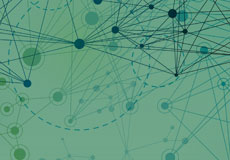Support for LHCONE
With the successful operation of the LHC accelerator and the start of the data analysis, there has come a re-evaluation of the computing and data models of the experiments. The goal of LHCONE (LHC Open Network Environment) is to ensure better access to the most important datasets by the worldwide HEP (High Energy Physics) community and hence improve the data analysis.
To effect this, several steps have been taken including:
- flattening the strict Tier1-Tier2-Tier3 hierarchy MONARC model so that any site may connect with any other;
- revisiting the implementation of strategic data placement;
- reinforcing the use of dataset caching – rather like the caching of web pages.
 These requirements and concepts are outlined in the Network Requirements document, published in September 2010 by K. Bos and I. Fisk.
These requirements and concepts are outlined in the Network Requirements document, published in September 2010 by K. Bos and I. Fisk.
Although the operation of the LHCOPN remains the same, moving data between Tier0-Tier1 and Tier1-Tier1, the steps mentioned above have altered the traffic patterns to the extent that substantial data transfers between major sites are regularly being observed on the national and GÉANT IP backbones, often lasting for several days. This traffic is not just a few high bandwidth flows but often made up of many small flows – the users have learnt how to use gridftp very effectively.
These changes have been discussed at the LHCOPN meetings and at a dedicated meeting in January 2011 between the experimenters and the NRENs. Several suggestions were presented and discussed on how to find a way forward. At the LHCOPN meeting in Lyon during February a draft architecture document for LHCONE was constructed, and subsequently revised, taking into account the user requirements and design input from the academic network community.
The main principle was to separate the LHC traffic, thus avoiding degraded performance both to the LHC community and to the other users of the academic IP networks. Doing nothing is not an option as it would almost certainly result in a serious impact on all network users.
Also at the Lyon meeting it was suggested to build a prototype, as documented in “LHCONE prototype planning”. This is to involve a limited number of sites in parallel with deriving a suitable implementation document. The sites important for the prototype are suggested in the document, “A Use Case for the LHC Open Network Environment”.


